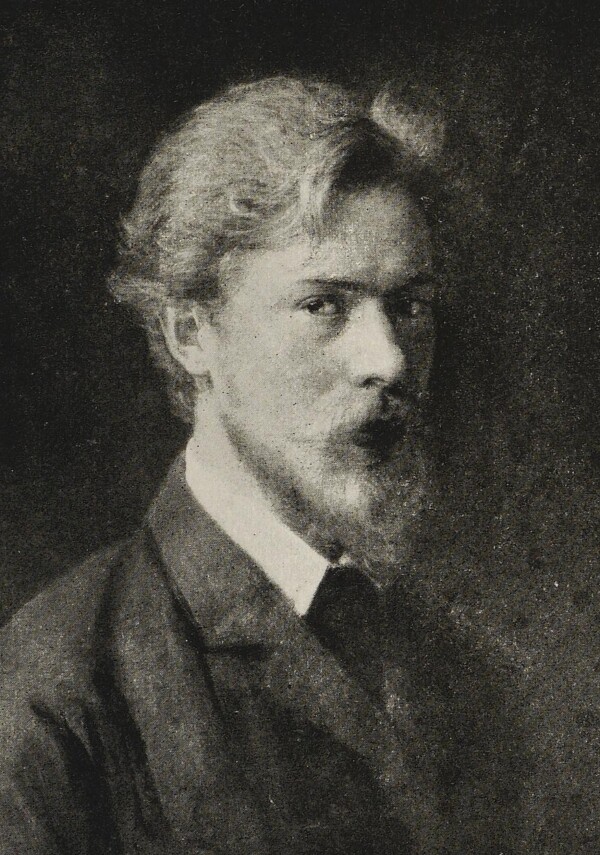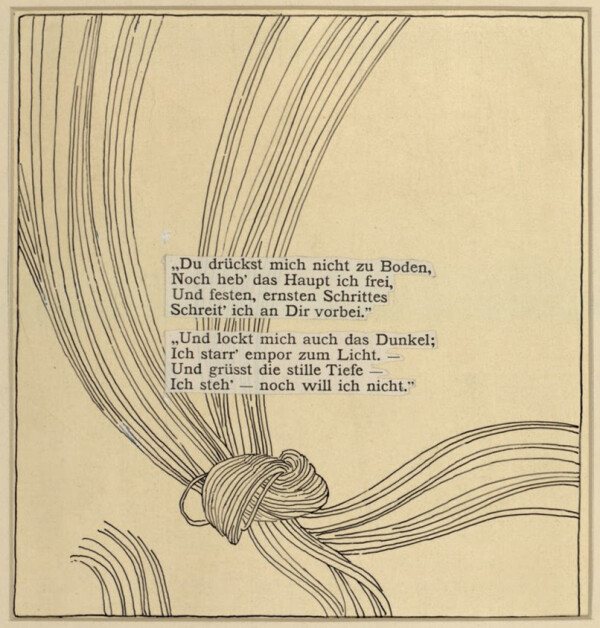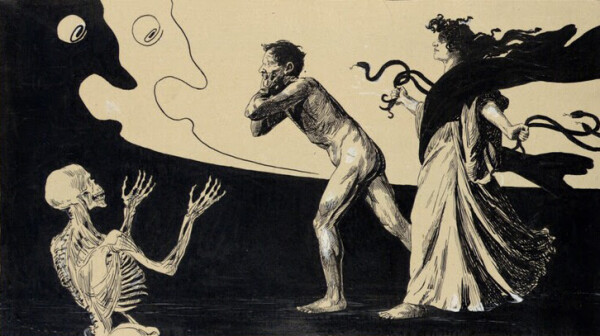Ernst Stöhr

Ernst Stöhr, Self-portrait, around 1886, in: Kunsthandlung C. J. Wawra (Hg.): Kunstauktion. Ernst Stöhr zum Gedächtnis, Versteigerung des künstlerischen Nachlasses Ernst Stöhr durch C. J. Wawra im Gebäude der Secession, Aukt.-Kat., Vienna 1918.
© Klimt Foundation, Vienna

Ernst Stöhr: Text page, The Albertina Museum, Vienna
© The ALBERTINA Museum, Vienna

Ernst Stöhr: Fury chasing a man, The Albertina Museum, Vienna
© The ALBERTINA Museum, Vienna
Ernst Stöhr was active as a painter, graphic artist, musician and writer. Together with Gustav Klimt and many other artists, he left the Vienna Künstlerhaus and founded the Association of Austrian Artists Vienna Secession in 1897.
Ernst Stöhr, born in St. Pölten in Lower Austria in 1860, was the son of an instrument maker. He attended the Vienna School of Arts and Crafts at the Austrian Museum of Art and Industry from 1877; disinterested and dissatisfied, however, he soon abandoned his studies. From 1879 he studied at the Academy of Fine Arts, where he was for instance taught by Carl Rudolf Huber and August Eisenmenger. Furthermore, he studied music with his uncle, who was a composer and conductor. To support himself during his studies, he also gave drawing and violin lessons. Stör later joined the Hagen Society and the Cooperative of Visual Artists in Vienna.
Co-Founder of a New Artists’ Association
Together with Gustav Klimt and other fellow artists, Stöhr officially left the cooperative in 1897. The group went on to found the Association of Austrian Artists Vienna Secession. In the next few years, Stöhr wrote many progressive essays for the Secession’s magazine Ver Sacrum. He also wrote prefaces for the “XIV. Ausstellung der Vereinigung bildender Künstler Österreichs Secession” [“14th Exhibition of the Association of Austrian Artists Secession”], also called the “Beethoven Exhibition,” and the “XVIII. Ausstellung der Vereinigung bildender Künstler Österreichs Secession Wien” [“18th Exhibition of the Association of Austrian Artists Vienna Secession”], also called the “Klimt Collective Exhibition,” in 1903. In 1899, a whole issue of the magazine was dedicated to Stöhr.
Restlessness and Refuge
Ernst Stöhr was known for his restlessness and his unbalanced temper and repeatedly had to seek help at mental hospitals and sanatoriums. To recover, the artist visited his family in Melk and St. Pölten as well as Wochein (now Bohinj, Slovenia), where he built a studio on the lake. It would become an important refuge for him for several years.
Commemorative Exhibition 1918
Stöhr committed suicide in St. Pölten in 1917. The Arbeiter-Zeitung published a brief obituary of the painter, poet and writer on 21 June 1917:
“A great artist has left us: the painter Ernst Stöhr. […] Ernst Stöhr was one of the pillars of the artists’ association ‘Secession,’ in whose exhibitions his mostly transcendental, deeply spiritual pictures held a prominent position.”
One year later, the Vienna Secession organized a comprehensive commemorative exhibition for Ernst Stöhr, which presented 300 drawings, etchings and paintings by the artist that were subsequently auctioned off. The association also published an illustrated exhibition catalogue with the title Ernst Stöhr zum Gedächtnis [In Memory of Ernst Stöhr] with essays by Josef Engelhart and Karl Graf.
Literature and sources
- Arbeiter-Zeitung, 21.06.1917, S. 6.
- Arbeiter-Zeitung, 10.10.1918, S. 2-3.
- Kunsthandlung C. J. Wawra (Hg.): Kunstauktion. Ernst Stöhr zum Gedächtnis, Versteigerung des künstlerischen Nachlasses Ernst Stöhr durch C. J. Wawra im Gebäude der Secession, Aukt.-Kat., Vienna 1918.
- Vereinigung bildender KünstlerInnen Wiener Secession (Hg.): Ver Sacrum. Gustav Klimt. XVIII. Ausstellung Nov.=Dez. 1903 Secession Wien, Ausst.-Kat., Secession (Vienna), 15.11.1903–06.01.1904, Vienna 1903, S. 7-8.
- Felix Czeike (Hg.): Historisches Lexikon Wien, Band 5, Vienna 1997, S. 355.
- Walter de Gruyter (Hg.): Allgemeines Künstler-Lexikon. Die bildenden Künstler aller Zeiten und Völker, Band CVI, Berlin 2020, S. 273.
- Hans Vollmer (Hg.): Allgemeines Lexikon der Bildenden Künstler von der Antike bis zur Gegenwart. Begründet von Ulrich Thieme und Felix Becker, Band XXXII, Leipzig 1938, S. 88.
- Österreichische Akademie der Wissenschaften (Hg.): Österreichisches Biographisches Lexikon 1815–1950, Band 13, Vienna 2009, S. 292-293.

